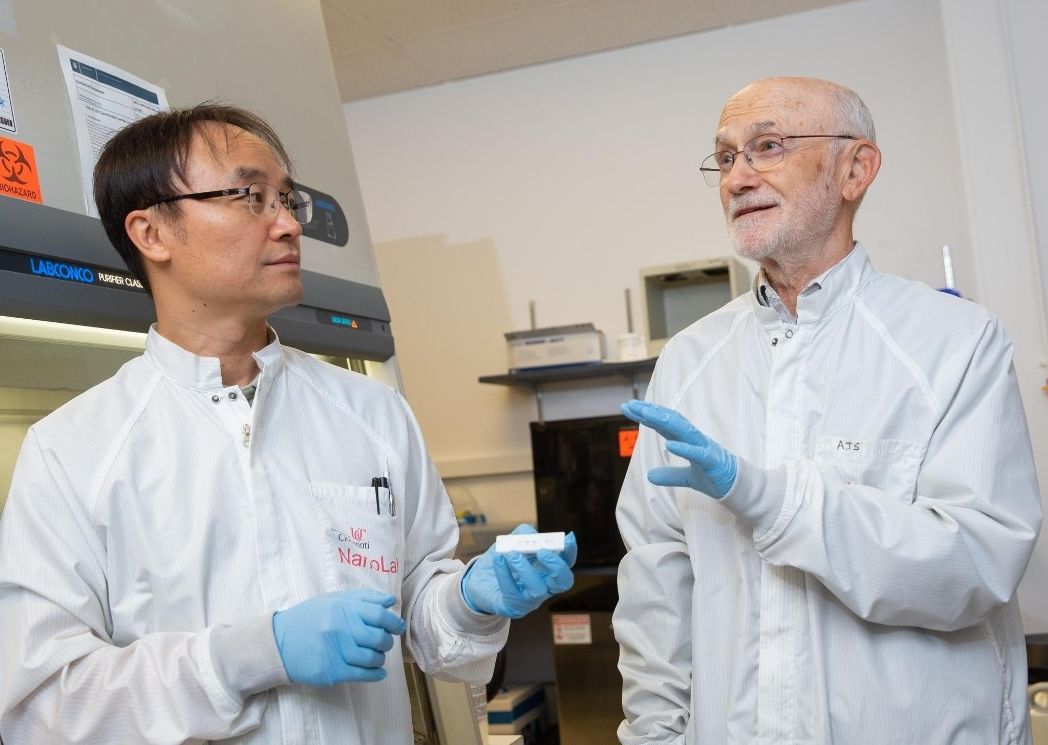Breakthrough Home Saliva Test Detects Gingivitis
University of Cincinnati Engineers Pioneer Device for Early Gingivitis Detection
Senior Research Associate Daewoo Han, left, and Distinguished Research Professor Andrew Steckl collaborated on a new at-home test for gingivitis in Steckl's NanoLab. | Image Credit: Andrew Higley/UC Marketing + Brand

A team of engineers at the University of Cincinnati (UC) has developed a new at-home test that can detect gingivitis, the earliest form of gum disease. The test, which is still in development, uses a saliva sample to detect the presence of endotoxins, toxins produced by the bacteria that cause gingivitis.
Gingivitis is driven by specific bacteria and pinpointing this culprit has posed a formidable challenge for researchers, as highlighted by Andrew Steckl, PhD, an Ohio Eminent Scholar and distinguished research professor in UC’s College of Engineering and Applied Science.
"The hurdle has been navigating the intricate task of detecting the toxin produced by the bacteria responsible for gingivitis," Steckl says in a release from the University of Cincinnati.
This pioneering effort saw collaboration between Steckl, UC Senior Research Associate Daewoo Han, PhD, and Sancai Xie, PhD, a principal scientist at Procter & Gamble Co. Their research findings have been published in the Royal Society of Chemistry journal Sensors and Diagnostics.
With experience developing other biosensing applications, the research team began looking at ideas for early detection of gingivitis and periodontal disease because of the prevalence of gum disease and its connections to numerous other health concerns. Saliva was the target of this research for a number of reasons.
"There are good reasons to use saliva,” Steckl says. “It's relatively plentiful and easy to obtain through noninvasive methods. And saliva has a lot of important elements that can act as indicators of your health."
The research team pretreated saliva samples with potato starch to eliminate the interference of amylase, a protein that could skew test results. Their innovative test relies on antibodies that react to the endotoxins present in the bacteria responsible for gingivitis. Specifically, the tests are currently designed to detect the presence and quantity of P. gingivalis lipopolysaccharides.
Now the team plans to work on both increasing the test sensitivity, and looking for other lipopolysaccharides that could be identified in saliva to provide diagnostic testing for other conditions.
While at-home pregnancy testing is relatively common, home diagnostics for diseases such as gingivitis were not common prior to the COVID-19 pandemic. However, the at-home medical testing market is predicted to become a $45 billion industry by 2031 according to Allied Market Research. Tests such as the one being developed at UC are poised to help people better understand their current health and long-term risks, ideally leading to earlier detection and improved treatment outcomes.